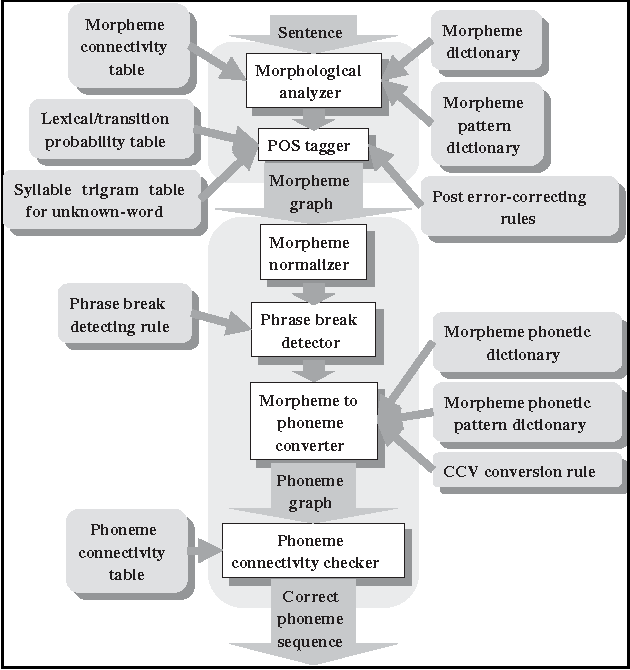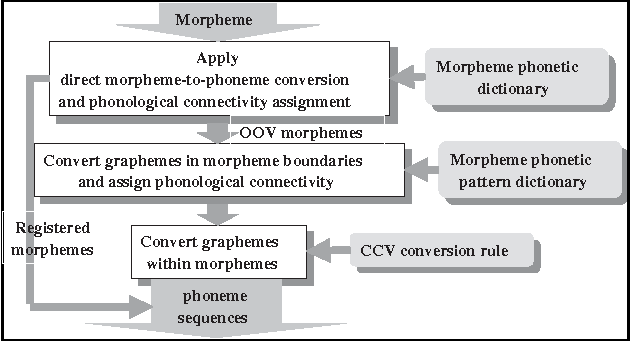WonIl Lee
POSTECH, Korea
Unlimited Vocabulary Grapheme to Phoneme Conversion for Korean TTS
Jun 10, 1998



Abstract:This paper describes a grapheme-to-phoneme conversion method using phoneme connectivity and CCV conversion rules. The method consists of mainly four modules including morpheme normalization, phrase-break detection, morpheme to phoneme conversion and phoneme connectivity check. The morpheme normalization is to replace non-Korean symbols into standard Korean graphemes. The phrase-break detector assigns phrase breaks using part-of-speech (POS) information. In the morpheme-to-phoneme conversion module, each morpheme in the phrase is converted into phonetic patterns by looking up the morpheme phonetic pattern dictionary which contains candidate phonological changes in boundaries of the morphemes. Graphemes within a morpheme are grouped into CCV patterns and converted into phonemes by the CCV conversion rules. The phoneme connectivity table supports grammaticality checking of the adjacent two phonetic morphemes. In the experiments with a corpus of 4,973 sentences, we achieved 99.9% of the grapheme-to-phoneme conversion performance and 97.5% of the sentence conversion performance. The full Korean TTS system is now being implemented using this conversion method.
Phonological modeling for continuous speech recognition in Korean
Jul 18, 1996



Abstract:A new scheme to represent phonological changes during continuous speech recognition is suggested. A phonological tag coupled with its morphological tag is designed to represent the conditions of Korean phonological changes. A pairwise language model of these morphological and phonological tags is implemented in Korean speech recognition system. Performance of the model is verified through the TDNN-based speech recognition experiments.
Chart-driven Connectionist Categorial Parsing of Spoken Korean
Nov 29, 1995

Abstract:While most of the speech and natural language systems which were developed for English and other Indo-European languages neglect the morphological processing and integrate speech and natural language at the word level, for the agglutinative languages such as Korean and Japanese, the morphological processing plays a major role in the language processing since these languages have very complex morphological phenomena and relatively simple syntactic functionality. Obviously degenerated morphological processing limits the usable vocabulary size for the system and word-level dictionary results in exponential explosion in the number of dictionary entries. For the agglutinative languages, we need sub-word level integration which leaves rooms for general morphological processing. In this paper, we developed a phoneme-level integration model of speech and linguistic processings through general morphological analysis for agglutinative languages and a efficient parsing scheme for that integration. Korean is modeled lexically based on the categorial grammar formalism with unordered argument and suppressed category extensions, and chart-driven connectionist parsing method is introduced.
 Add to Chrome
Add to Chrome Add to Firefox
Add to Firefox Add to Edge
Add to Edge